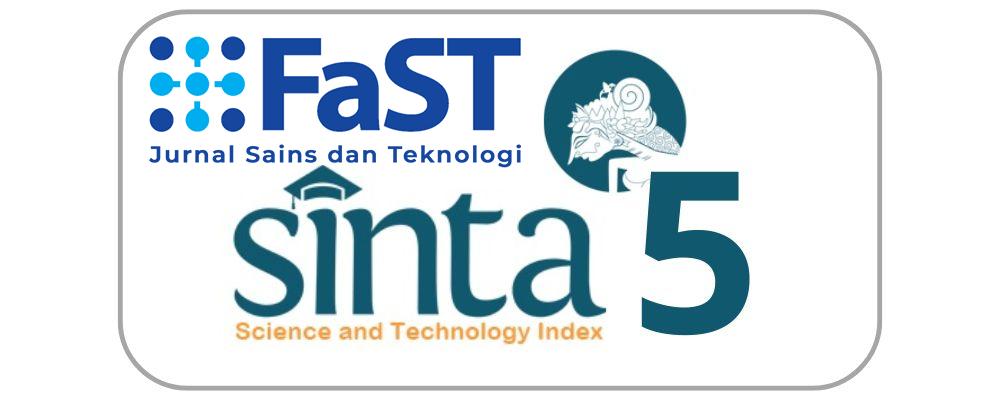MODEL MATEMATIKA UNTUK MASALAH TRANSPORTASI LEBIH DARI SATU PRODUK [MATHEMATICAL MODELS FOR TRANSPORTATION PROBLEMS INVOLVING MORE THAN ONE PRODUCT]
DOI:
https://doi.org/10.19166/jstfast.v6i2.5340Keywords:
transportation problems, distribution patterns, northwest corner method, minimum cost method, Vogel's Approximation Method (VAM)Abstract
Distribution companies need to plan efficient shipments to avoid incurring large shipping costs. Therefore, a company that addresses transportation problems by choosing the right distribution pattern can obtain optimal distribution costs. The transportation problem model is applied to allocate the same product to the destination places. In the problem of distributing more than one product, the transportation problem model is modified so that it can be used to optimize shipping costs. This study aimed to optimize distribution costs using a modified transportation problem model. The data obtained from the "Sejahtera" store included data on distribution costs, supply from sources, and requests from each store. The analysis was carried out by forecasting the demand for products processed by a time series process to assist companies in estimating the amount of demand for each product in the future. Then, optimization was carried out by testing the modified model for the transportation problem of more than one product under three conditions. Optimization of distribution costs was carried out by finding a feasible initial solution using the northwest corner method, the minimum cost method, and the modified Vogel's Approximation Method (VAM) approximation method, followed by determining the optimum solution using the stepping-stone method and the Modified Distribution Method (MODI). Based on the research conducted, the three conditions were tested using a modified transportation problem model for more than one product resulting in optimum shipping costs.
Bahasa Indonesia Abstract:
Perusahaan distibusi perlu merencanakan pengiriman yang efisien agar tidak mengeluarkan biaya pengiriman yang besar dengan meminimalkan biaya pengiriman. Oleh karena itu, perusahaan menerapkan masalah transportasi dalam memilih pola distribusi yang tepat untuk memperoleh biaya distribusi yangoptimal. Masalah transportasi diterapkan untuk mengalokasikan produk yang sama ke tempat-tempat tujuan. Dalam permasalahan pendistribusian lebih dari satu produk, model masalah transportasi dimodifikasi sehingga dapat digunakan untuk mengoptimalkan biaya pengiriman. Data diperoleh dari toko Sejahtera meliputi data biaya distribusi, persediaan dari sumber dan permintaan setiap toko yang bertujuan untuk mengoptimalkan biaya distribusi menggunakan model masalah transportasi yang dimodifikasi. Analisis dilakukan dengan meramalkan permintaan produk yang diolah dengan proses time series untuk membantu perusahaan dalam memperkirakan jumlah permintaan masing-masing produk untuk waktu yang akan datang. Kemudian melakukan optimasi dengan menguji model yang sudah dimodifikasi untuk masalah transportasi lebih dari satu produk dalam tiga kondisi. Optimasi biaya distribusi dilakukan dengan mencari pemecahan awal yang layak menggunakan metode sudut barat laut, metode biaya minimum dan metode aproksimasi Vogel’s Approximation Method (VAM) yang dimodifikasi dilanjutkan dengan menentukan solusi optimum menggunakan metode batu loncatan (stepping-stone) dan Modified Distribution Method (MODI) yang dimodifikasi. Berdasarkan penelitian yang dilakukan, ketiga kondisi yang diuji menggunakan model masalah transportasi yang dimodifikasi untuk lebih dari satu produk menghasilkan biaya pengiriman yang optimum.
References
Amaliah, B., Krisdanto, A., & Perwita, A. D. (2016). Metode max min Vogel’s approximation method untuk menemukan biaya minimal pada permasalahan transportasi. Proceeding Seminar Nasional Manjemen Teknologi XXIV. Program Studi MMT-ITS Surabaya.
Aqidawati, E. F., Rahadian, N., Haqqoni, Z., Yuniaristanto, & Sutopo, W. (2017). Optimasi distribusi semen PT. XYZ dengan modifikasi model transportasi. Jurnal Rekayasa Sistem & Industri, 4(2), 187-191. https://doi.org/10.25124/jrsi.v4i02.288
Blocher, E., Stouth, D., Juras, P., & Cokins, G. (2013). Cost Management (6th ed.). McGraw-Hill Company.
Kotler, P., & Keller, K. L. (2016). Marketing Management (15th ed.). Pearson Education, Inc.
Mulyono, S. (2007). Riset Operasi. Fakultas Ekonomi Universitas Indonesia, Jakarta.
Sitorus, V. B., Wahyuningsih, S., & Hayati, M. N. (2017). Peramalan dengan metode seasonal autoregressive integrated moving average (SARIMA) di bidang ekonomi (studi kasus: inflasi Indonesia). Eksponensial, 8(1), 17-26.
Downloads
Published
Issue
Section
License
“Authors who publish with this journal agree to the following terms:
1) Authors retain copyright and grant the journal right of first publication with the work simultaneously licensed under a Creative Commons Attribution License (CC-BY-SA 4.0) that allows others to share the work with an acknowledgement of the work's authorship and initial publication in this journal.
2) Authors are able to enter into separate, additional contractual arrangements for the non-exclusive distribution of the journal's published version of the work (e.g., post it to an institutional repository or publish it in a book), with an acknowledgement of its initial publication in this journal.
3) Authors are permitted and encouraged to post their work online (e.g., in institutional repositories or on their website). The final published PDF should be used and bibliographic details that credit the publication in this journal should be included.”





